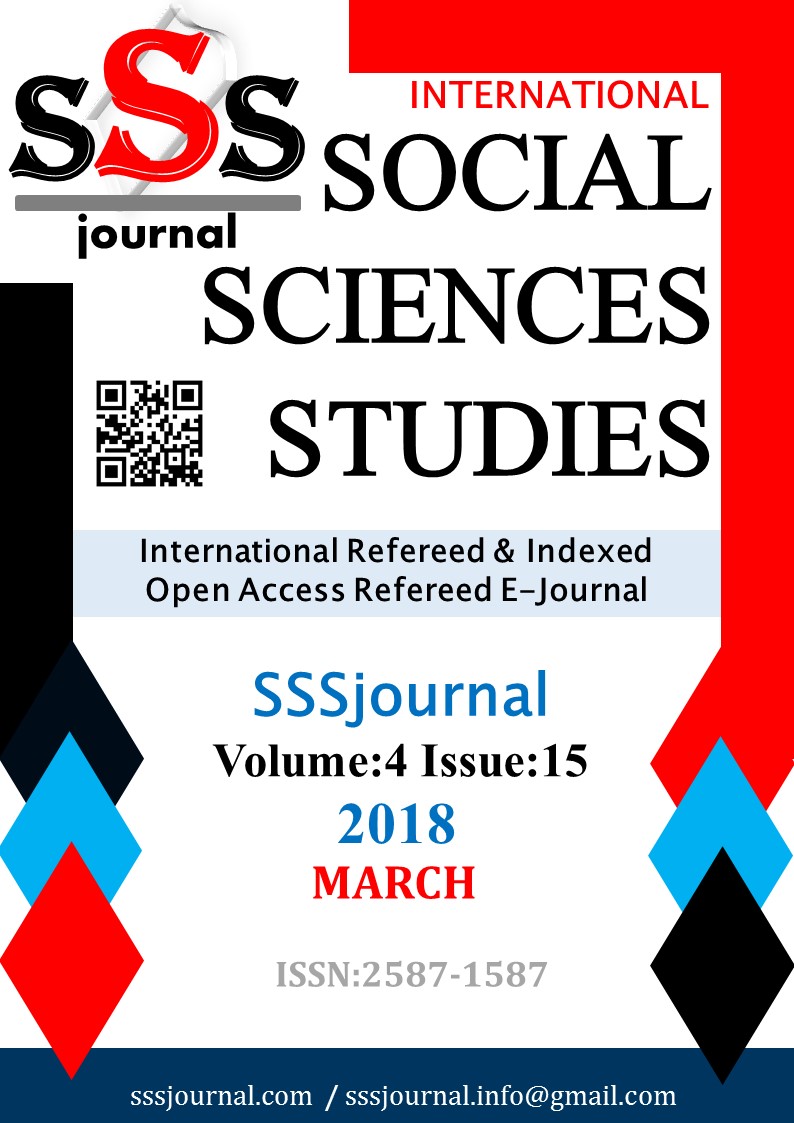BEC SINIFLANDIRILMASINA GÖRE TÜRKİYE VE BRICS ÜLKELERİ ARASINDAKİ DIŞ TİCARETİN KARŞILAŞTIRMALI ÜSTÜNLÜKLER ANALİZİ (2000-2016)
Author :
Abstract
Bu çalışmada, dünyanın toplam Gayri Safi Yurtiçi Hasılasının dörtte birini elinde bulunduran BRICS ülkeleri ile Türkiye arasındaki dış ticaretinin karşılaştırmalı üstünlüklerini ortaya koymak amacıyla, BEC bazında 2000-2016 dönemini kapsayan dış ticaret verileri incelenmiş ve Bela Balassa tarafından geliştirilen Açıklanmış Karşılaştırmalı Üstünlükler analizi uygulanmıştır. Hesaplanan AKÜ endeksi değerlerine göre Türkiye, sermaye malları mal grubunda Rusya ve Hindistan; tüketim malları mal grubunda Brezilya, Rusya ve Güney Afrika pazarlarında yüksek rekabet gücüne sahip iken, hammadde mal grubunda ise sadece Çin pazarında avantajlı konumdadır. Diğerleri mal grubunda ise Rusya ve Hindistan pazarlarında AKÜ değerleri yüksek çıkmıştır. Dezavantajlı konumda olan mal grupları ise, Çin ve Güney Afrika – sermaye malları, Rusya – hammadde, Çin – tüketim malları, Çin ve Brezilya – diğerleri mal grubu olarak bulunmuştur.
Keywords
Abstract
In this study, for the purpose of establishing comparative advantages of foreign trade between Turkey and BRICS countries which have a quarter of the world's total Gross Domestic Product, were examined foreign trade data based on BEC classification and covering the 2000-2016 period, and also were implemented Analysis of Revealed Comparative Advantage developed by Bela Balassa. According to the calculated values of the RCA, Turkey has high competitive power in the Russian and Indian markets in the Capital Goods. In the Producer Goods Turkey is advantageous only in the Chinese market. Also, Turkey has high competitive power in Brazil, Russia and South Africa markets in the Consumption Goods. In Other Goods group the RCA values are high in Russian and İndian markets. Groups of goods in a disadvantageous position are: China and South Africa – Capital Goods, Russia – Producer Goods, China – Consumptions Goods, China and Brazil - Other Goods group.
Keywords
- Akbulut, G., & Yılmaz, C. (2015). Türkiye-Rusya Dış Ticaretinin Sektörel Düzeyde Analizi, International
- Akbulut, G., & Yılmaz, C. (2015). Türkiye-Rusya Dış Ticaretinin Sektörel Düzeyde Analizi, International Conference On Eurasian Economies 2015, Session 3C: Uluslararası Ticaret I, 431-436.
- Altay, H. (2008). Karşılaştırmalı üstünlükler teorisi kapsamında Türk endüstrilerinin Avrupa Birliği (15)pazarındaki rekabet gücü düzeylerinin incelenmesi: 1995-2007”. Dumlupınar Üniversitesi Sosyal Bilimler Dergisi, 21, ss. 215-239.
- Balassa, B. (1965). Trade Liberalisation and “Revealed” Comparative Advantage1, "Trade Liberalizationand Revealed Comparative Advantage", The Manchester School of Economics and Social Studies, Vol. 33, No. 256. ss. 99-123.
- Balassa, B. (1977). "A 'stages' Approach to Comparative Advantage", World Bank Staff Working Paper No. 256.
- Balassa, B. (1986). “Comparative Advantage in Manufactured Goods: A Reappraisal. Review of Economics and Statistics”, 68, (2), ss. 315-19.
- Batra, A.; Khaan, Z. (2015). “Revealed comparative advantage: an analysis for India and China”. Indian Council for Research on International Economic Relations, Working Paper,168, ss.1-85.
- Bender, S.; Li, W. (2002). “The changing trade and revealed comparative advantages of Asian and Latin American manufacture exports”. Yale Economic Growth Center Discussion Paper, s.843.
- Bowen, H. P. (1983). “On The Theoretical İnterpretation of Indices of Trade Intensity and Revealed Comparative Advantage”, Weltwirtschaftliches Archiv, Vol:119, ss. 464-472.
- Erk, N. (1987). “Revealed Comparative Advantage and Protectionist Policies-An Analysis of Turkey’ s Foreign Trade in 1980”, Çukurova Üniversitesi Sosyal Bilimler Dergisi, Y:1, S:1, Adana.
- Eşiyok, B. A. (2007). "Türkiye Ekonomisinin Rekabet Gücündeki Gelişmeler ve Faktör KullanımYoğunluklarına Göre Dış Ticaretin Yapısı", Finans Politik ve Ekonomik Yorumlar, Cilt:44, Sayı 514, ss. 16- 17.
- Erlat, G.; Erlat H. (2004). “The Performance of Turkish Exports at the Sectoral Level, 1990-2000”, 24th Annual Conference of the Middle East Economic Association, Sen Diego, USA.
- Heckscher, E. (1965). “The Effect of Foreign Trade on the Distribution of Income, in Ellis and Metzler (eds.)” Readings in the Theory of International Trade, Duckworth.
- Krendeleva, M. (2015). “Türkiye ve Rusya Federasyonu Arasındaki Dış Ticaretin Sektörel Analizi”, Yüksek Lisans tezi, Atatürk Üniversitesi, Sosyal Bilimler Enstitüsü, Erzurum.
- Liesner, H. (1958). The European Common Market and British Industry”, The Economic Journal, Vol. 68, No. 270, ss. 302-316.
- Ohlin, B. (1953). “Interregional and International Trade”, Harvard U.P., Cambridge, Massachussetts.
- Ohlin, B. (1977). “The International Allocation of Economic Activity”, Proceedings of a Nobel Seminar, Holmes and Meier, New York.
- O'Neill, J. (2001).“Building Better Global Economic BRIC’s” Goldman Sachs Economic Research Group, Global Economics Paper No:66.
- Shahab, S. Mahmood, M. (2012). “Comparative advantage of leather industry in Pakistan with selected Asian economies”. International Journal of Economics and Financial Issues, 3(1), ss. 133-139.
- Sandalcılar, A. (2011). “Türkiye-Suriye Dış Ticaretinin Sektörel Analizi”. Atatürk Üniversitesi İktisadi ve İdari Bilimler Dergisi, 25, p. 3-4.
- Serin, V.; Civan, A. (2008). “Revealed Comparative Advantage and Competitiveness: A Case Study for Turkey towards the EU”, Journal of Economic and Social Research, Vol:10, No:2.
- Total Population Indicators. World Bank. Erişim tarihi Eylül 2017.
- Türkiye İstatistik Kurumu veri tabanı İstatistik Göstergeler. Erişim Tarihi: Eylül 2017.
- World Development Indicators. "EU GDP (current US$)". World Bank. Erişim tarihi Eylül 2017.





